Sad Kahyangan or Sad Kahyangan Jagad are six main temples which are believed as the pillars of Bali. The word “Sad” was derived from Sanskrit word means “six” and “Kahyangan” means “place of Gods.” Hence, “Sad Kahyangan” could be translated into “six places of Gods.” Here are those six temples:
1. Besakih
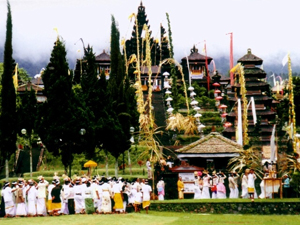 Besakih Temple is a complex of temples located in Besakih Village, District of Rendang, Karangasem Regency, Bali, Indonesia. The complex of Besakih Temple consists of 18 temples and 1 main temple. Besakih Temple is the main temple of all temples in Bali. Among the temples in the complex of Besakih Temple, Penataran Agung Temple is the biggest, the highest in the number of “pelinggih” (small temple for specific God), the highest in the kind of offerings, and the center of all temples in the complex of Besakih Temple. In Penataran Agung Temple there are 3 main pelinggih of Tri Murti, they are Brahma who is the creator of universe, Wisnu as the caretaker, and Siwa as the destroyer.
Besakih Temple is a complex of temples located in Besakih Village, District of Rendang, Karangasem Regency, Bali, Indonesia. The complex of Besakih Temple consists of 18 temples and 1 main temple. Besakih Temple is the main temple of all temples in Bali. Among the temples in the complex of Besakih Temple, Penataran Agung Temple is the biggest, the highest in the number of “pelinggih” (small temple for specific God), the highest in the kind of offerings, and the center of all temples in the complex of Besakih Temple. In Penataran Agung Temple there are 3 main pelinggih of Tri Murti, they are Brahma who is the creator of universe, Wisnu as the caretaker, and Siwa as the destroyer.
2. Lempuyang
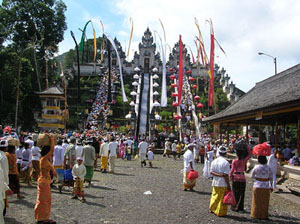 In various sources and manuscript or ancient inscription there are three big temples that are usually mentioned, they are Besakih, Ulun Danu Batur and Lempuyang. Lempuyang is located on top of the Bisbis Hill or Lempuyang Mountain, Karangasem. This temple is estimated as the oldest temple in Bali. Moreover, it is expected already in the era when Hinduism and Buddhism had not entered Bali yet. Lempuyang temple is the place of Hyang Gni Jaya or Iswara.
In various sources and manuscript or ancient inscription there are three big temples that are usually mentioned, they are Besakih, Ulun Danu Batur and Lempuyang. Lempuyang is located on top of the Bisbis Hill or Lempuyang Mountain, Karangasem. This temple is estimated as the oldest temple in Bali. Moreover, it is expected already in the era when Hinduism and Buddhism had not entered Bali yet. Lempuyang temple is the place of Hyang Gni Jaya or Iswara.
3. Goa Lawah
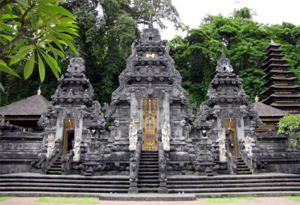 Goa Lawah means Bat Cave. In Bali, Goa Lawah Temple is a temple for worshipping Sea God. This temple could be found in Pesinggahan Village, Dawan District, Klungkung. Goa Lawah is the main temple of Pura Segara (Sea temple) in Bali. The story in Prekempa Gunung Agung manuscript tells that Lord Siwa send Sang Hyang Tri Murti (Brahma, Wisnu, and Iswara) to save the earth. Brahma went down to the earth manifested as Ananta Bhoga Dragon. On the other hands, Wisnu manifested as Basuki Dragon and Iswara transformed into Taksaka Dragon. Basuki Dragon, the manifestation of Wisnu had his head down to the ocean stirring the water so that the steam became cloud. His tail became the mountains and the scales became trees forming dense forests. It is said that the head of Basuki Dragon is symbolized by Goa Lawah Temple and its mounted tail is symbolized by Gunung Agung. The center of his tail is in Goa Raja Temple, one of the temple complex in Besakih. Some people believe that Goa Raja is connected with Goa Lawah.
Goa Lawah means Bat Cave. In Bali, Goa Lawah Temple is a temple for worshipping Sea God. This temple could be found in Pesinggahan Village, Dawan District, Klungkung. Goa Lawah is the main temple of Pura Segara (Sea temple) in Bali. The story in Prekempa Gunung Agung manuscript tells that Lord Siwa send Sang Hyang Tri Murti (Brahma, Wisnu, and Iswara) to save the earth. Brahma went down to the earth manifested as Ananta Bhoga Dragon. On the other hands, Wisnu manifested as Basuki Dragon and Iswara transformed into Taksaka Dragon. Basuki Dragon, the manifestation of Wisnu had his head down to the ocean stirring the water so that the steam became cloud. His tail became the mountains and the scales became trees forming dense forests. It is said that the head of Basuki Dragon is symbolized by Goa Lawah Temple and its mounted tail is symbolized by Gunung Agung. The center of his tail is in Goa Raja Temple, one of the temple complex in Besakih. Some people believe that Goa Raja is connected with Goa Lawah.
4. Uluwatu
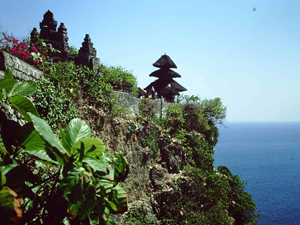 Uluwatu Temple or so called Luhur Uluwatu Temple is one of Balinese temple with spectacular scenery which for the tourists have been becoming the most favorite temple to visit in Bali. Located in the southwestern end of Bali Island, this temple perches on the top of the high and rocky escarpment with amazing sea panorama below.
Uluwatu Temple or so called Luhur Uluwatu Temple is one of Balinese temple with spectacular scenery which for the tourists have been becoming the most favorite temple to visit in Bali. Located in the southwestern end of Bali Island, this temple perches on the top of the high and rocky escarpment with amazing sea panorama below.
Based on the history, this place was built in the eleventh century by Empu Kuturan; a Hindu priest came from Java. To enter this temple, the visitors must use shawl and sarong which could be rented there. The best time for visiting this place is in the sunset to see and feel the spectacular scenery at the edge of Bali Island.
5. Batukaru
 Batukaru or Luhur Batukaru Temple is located in Wongaya Village in the district of Penebel, Tabanan. This temple is in the western side of Bali in the south slope of Batukaru Mountain. This name was named after the mountain itself. There is a unique ritual before entering this temple that it requires the visitors to pray at Jero Taksu Temple first, which is a bit far from this temple. Luhur Batukaru Temple is the place for worshipping the God of plants, thus in Luhur Uluwatu Temple, God was worshipped in the name of Ratu Hyang Tumuwuh. Tumuwuh means “growing”, so the God here manifests as the one who maintain the plants and water properly to make it grows well.
Batukaru or Luhur Batukaru Temple is located in Wongaya Village in the district of Penebel, Tabanan. This temple is in the western side of Bali in the south slope of Batukaru Mountain. This name was named after the mountain itself. There is a unique ritual before entering this temple that it requires the visitors to pray at Jero Taksu Temple first, which is a bit far from this temple. Luhur Batukaru Temple is the place for worshipping the God of plants, thus in Luhur Uluwatu Temple, God was worshipped in the name of Ratu Hyang Tumuwuh. Tumuwuh means “growing”, so the God here manifests as the one who maintain the plants and water properly to make it grows well.
6. Pusering Jagat
 Pusering Jagat Temple is located in Pejeng Village, District of Tampaksiring, Gianyar. This temple is the member of Sad Kahyangan with its position in the middle of Bali Island. In Hindu cosmology, middle or center is the place of Lord Siwa. Local people also believe that this temple is the center of the earth.
Pusering Jagat Temple is located in Pejeng Village, District of Tampaksiring, Gianyar. This temple is the member of Sad Kahyangan with its position in the middle of Bali Island. In Hindu cosmology, middle or center is the place of Lord Siwa. Local people also believe that this temple is the center of the earth.
In this temple there are a lot of statues, like statues of Ganesha (son of Siwa), Durga (wife of Siwa) and also some Bhairawa. There are also ancient statues for the symbol of men’s genital or “purusa” and female’s genital or “pradana.” In Hinduism, Purusa and Pradana are the God’s first creation which became the seeds of life. Purusa is the seed of spirituality and Pradana is the seed of materials. The rendezvous of these Purusa and Pradana were the beginning of a life. There are also some inheritances in form of ancient vases which are called “Sangku Sudamala” symbolized the holy water for life. Inside Sangku Sudamala, an image that shown 1251 Saka year could be found.

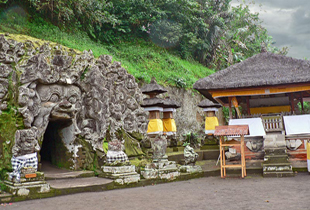
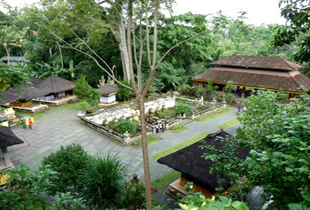
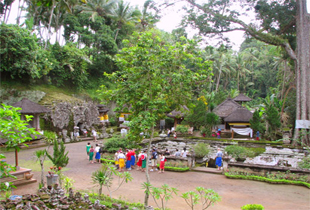
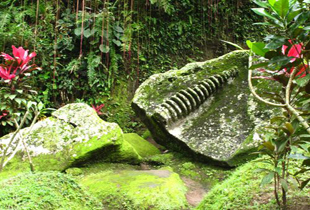


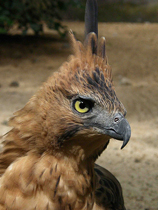 Elang Jawa / Javan Hawk-eagle (Spizaetus bartelsi) is an Indonesian national bird because its similarity with “Garuda Indonesia” the symbol of the country. It is also the symbol of the endangered animals in Indonesia. Javan Hawk-eagle can only be found in Java Island where they dwell the forests of Java. As the main predator, Javan Hawk-eagle plays importand role in maintaining the balance and function of forest biomes. Javan Hawk-eagle is in the category of the most endangered predator bird in the world and according to the newest endangered species criteria from IUCN, Javan Hawk-eagle is in the category of “Endangered.”
Elang Jawa / Javan Hawk-eagle (Spizaetus bartelsi) is an Indonesian national bird because its similarity with “Garuda Indonesia” the symbol of the country. It is also the symbol of the endangered animals in Indonesia. Javan Hawk-eagle can only be found in Java Island where they dwell the forests of Java. As the main predator, Javan Hawk-eagle plays importand role in maintaining the balance and function of forest biomes. Javan Hawk-eagle is in the category of the most endangered predator bird in the world and according to the newest endangered species criteria from IUCN, Javan Hawk-eagle is in the category of “Endangered.” Mountain Anoa is another Indonesian endangered animal. This animal is a subfamily of the wild bull. However, its tiny size makes this animal looks more like a deer. This Indonesian endemic animal could only be found in Sulawesi and island of Buton.
Mountain Anoa is another Indonesian endangered animal. This animal is a subfamily of the wild bull. However, its tiny size makes this animal looks more like a deer. This Indonesian endemic animal could only be found in Sulawesi and island of Buton. Cuscus Bear or Kuse (Ailurops ursinus) is one of the two kind of cuscus endemic species in Sulawesi. This animal belongs to marsupilia or animal with pouch in their body. The female cuscuses carry their baby in this pouch in front of their stomach. The length of their body and head is 56 cm, their tail is 54 cm and their weight can reach 8 kg. Kuse has prehensile tail which can hold things and it is usually used for helping their grip on the tree or branches. In North Sulawesi, Kuse face serious danger of extinction because of its small population. Between 1980 and 1995 in Tangkoko, the population of Kuse had been undergone significant decrements until 50%. A survey held in 1999 showed that this animal could only be spotted seven times in the length of 491 km transect path. That fact shows that the population density of this animal was very low.
Cuscus Bear or Kuse (Ailurops ursinus) is one of the two kind of cuscus endemic species in Sulawesi. This animal belongs to marsupilia or animal with pouch in their body. The female cuscuses carry their baby in this pouch in front of their stomach. The length of their body and head is 56 cm, their tail is 54 cm and their weight can reach 8 kg. Kuse has prehensile tail which can hold things and it is usually used for helping their grip on the tree or branches. In North Sulawesi, Kuse face serious danger of extinction because of its small population. Between 1980 and 1995 in Tangkoko, the population of Kuse had been undergone significant decrements until 50%. A survey held in 1999 showed that this animal could only be spotted seven times in the length of 491 km transect path. That fact shows that the population density of this animal was very low. Maleo is in the category of endangered animal. Its habitat is in Sulawesi and Buton Island. They live in the lowland and coast. This “flashy” bird has some characteristics like thin body, dark crest, yellowish head, black thight, and white stomach with pink area on dorsal. This rare bird usually stays silent, but if they are found around their nest they could be very noisy.
Maleo is in the category of endangered animal. Its habitat is in Sulawesi and Buton Island. They live in the lowland and coast. This “flashy” bird has some characteristics like thin body, dark crest, yellowish head, black thight, and white stomach with pink area on dorsal. This rare bird usually stays silent, but if they are found around their nest they could be very noisy.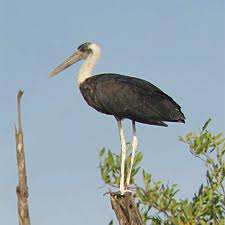 This bird is belong to ciconiidae family. Bangau hitam or bangau tongtong were originated from Asia, especially India, Indochina, and Indonesia except Papua and Maluku. They spread widely to Africa, Myanmar, Hong Kong, and Philippine. This firm footed bird like to live around swamp, river, mangrove, ricefield, and open forest, sometimes even in dry or muddy land. This stork can be easily identified by its black body except in the neck and lower abdomen. Its length could reach 91 centimeter. In the night, bangau tongtong are perched on the branch. This species is the only one among the stork that does not widen their feet and wings while flying. This animal is not really have much variation of life. Bangau tongtong can live alone, in pair, or in group depending on the situation. Nowadays, this bird which in Java is known with name “sandanglawe” is getting hard to meet. They are categorized as preserved animal and protected by laws because of its endangered status.
This bird is belong to ciconiidae family. Bangau hitam or bangau tongtong were originated from Asia, especially India, Indochina, and Indonesia except Papua and Maluku. They spread widely to Africa, Myanmar, Hong Kong, and Philippine. This firm footed bird like to live around swamp, river, mangrove, ricefield, and open forest, sometimes even in dry or muddy land. This stork can be easily identified by its black body except in the neck and lower abdomen. Its length could reach 91 centimeter. In the night, bangau tongtong are perched on the branch. This species is the only one among the stork that does not widen their feet and wings while flying. This animal is not really have much variation of life. Bangau tongtong can live alone, in pair, or in group depending on the situation. Nowadays, this bird which in Java is known with name “sandanglawe” is getting hard to meet. They are categorized as preserved animal and protected by laws because of its endangered status. The status of this animal is endangered; WWF decided to protect this animal from extinction. Badak Jawa / Java Rhinoceros is one of the rarest giant mammals in the world. The name “rhinoceros” is derived from the Greek for “nose horn,” which indicates the horn that rhinoceroses have on their snout. This horn is made from keratin fiber. The length of their body could reach 2-4 m, with height about 170 cm. The weight of this big animal is amazing, reaching 900 – 2,300 kg or about 2 ton. Rhinoceros is characterized by grey and “armored like” body. Java rhinoceros can be found in Ujung Kulon National Park, Banten.
The status of this animal is endangered; WWF decided to protect this animal from extinction. Badak Jawa / Java Rhinoceros is one of the rarest giant mammals in the world. The name “rhinoceros” is derived from the Greek for “nose horn,” which indicates the horn that rhinoceroses have on their snout. This horn is made from keratin fiber. The length of their body could reach 2-4 m, with height about 170 cm. The weight of this big animal is amazing, reaching 900 – 2,300 kg or about 2 ton. Rhinoceros is characterized by grey and “armored like” body. Java rhinoceros can be found in Ujung Kulon National Park, Banten.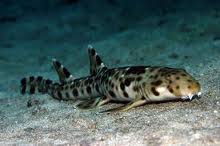 Beautiful skin pattern! This shark’s skin has a lot of similarity with the skin of a leopard; hexagonal brown spots with pale center spread along the upper body. Small dark spots cover their snout, meanwhile the bigger spots exactly behind the fins. The habitat of this animal is the coral reef, sand, and seaweed field across Papua.
Beautiful skin pattern! This shark’s skin has a lot of similarity with the skin of a leopard; hexagonal brown spots with pale center spread along the upper body. Small dark spots cover their snout, meanwhile the bigger spots exactly behind the fins. The habitat of this animal is the coral reef, sand, and seaweed field across Papua.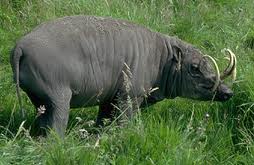 Babirusa Sulawesi is in the list of extremely endangered animal. This animal is known living in the north peninsula and northeast area of Sulawesi, and a few of them could also be found in the center, east, and southeast of Sulawesi. This animal characteristic is the large tusk that is originated from its canine. The weight of this animal could reach 600 kg. This animal is usually seen in tropical rainforest area.
Babirusa Sulawesi is in the list of extremely endangered animal. This animal is known living in the north peninsula and northeast area of Sulawesi, and a few of them could also be found in the center, east, and southeast of Sulawesi. This animal characteristic is the large tusk that is originated from its canine. The weight of this animal could reach 600 kg. This animal is usually seen in tropical rainforest area.
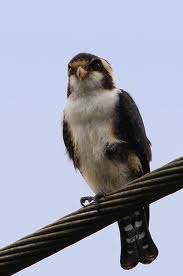 This bird is a carnivore or meat eater. Black-thighed falconet is one of the well known species of this bird. They are known because of their tiny body. Black-thighed falconet has small beak, warm blooded, and just like bird in common, they breed by laying egg.
This bird is a carnivore or meat eater. Black-thighed falconet is one of the well known species of this bird. They are known because of their tiny body. Black-thighed falconet has small beak, warm blooded, and just like bird in common, they breed by laying egg.
 Batur Mountain is an active volcano which is located in the district of Kintamani of Bangli Regency, Bali, Indonesia. This volcano stands tall in 1.717 m above sea level and posses a wide and beautiful caldera. The caldera of Batur Mountain was formed by two great ancient eruptions in about 29.000 and 20.000 years ago. In the middle of the caldera, there is a beautiful crescent shaped lake known as Batur Lake. Batur Lake is about 7.5 km in length and maximum 2.5 km in width, with approximately 22 km circumference and 16 km2 area.
Batur Mountain is an active volcano which is located in the district of Kintamani of Bangli Regency, Bali, Indonesia. This volcano stands tall in 1.717 m above sea level and posses a wide and beautiful caldera. The caldera of Batur Mountain was formed by two great ancient eruptions in about 29.000 and 20.000 years ago. In the middle of the caldera, there is a beautiful crescent shaped lake known as Batur Lake. Batur Lake is about 7.5 km in length and maximum 2.5 km in width, with approximately 22 km circumference and 16 km2 area.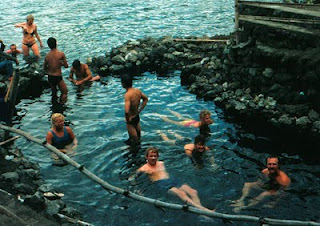



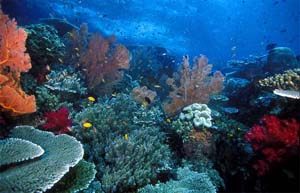 Visiting Indonesia for a vacation is exciting without any doubt since this has a lot of allures to enjoy. Of many things you can enjoy in Indonesia, you should consider visiting some beaches for diving. Indonesia is an archipelago consisting hundreds of small and big islands. Related to this thing, it makes sense that tourists can find a wide range of diving spots that are popular not only for local tourists but also people from across the world. In past decades, Indonesian diving has been organized in the right manner so that if you visit some diving spots with amazing coral reefs and a wide range of seawater inhabitants, then you can get a range of comfortable facilities ranging from convenient accommodation to professional diving guide. When it comes to popular diving spots available in Indonesia, the first diving spot to visit is Raja Ampat, which is located in West Papua – an eastern part of Indonesia. As a matter of fact, Raja Ampat is still positioned in rural area where modern life is still far from reach. In spite of its geographical location, Raja Ampat still allows you to get excitement since it becomes one of the best diving spots not only in Indonesia but also in the world. As a proof, more and more international divers come to Raja Ampat to enjoy beautiful coral reefs. Diving in Raja Ampat is certainly exciting as diving spot of this area has up to 75 % of coral reefs available in this planet. Diving spot of Raja Ampat contains more than 600 species of coral reefs. Condition of beaches of Raja Ampat is perfectly intact where you can enjoy tranquility and breeze. This way you can enhance your excitement so that this place is a proper choice to relax and unwind.
Visiting Indonesia for a vacation is exciting without any doubt since this has a lot of allures to enjoy. Of many things you can enjoy in Indonesia, you should consider visiting some beaches for diving. Indonesia is an archipelago consisting hundreds of small and big islands. Related to this thing, it makes sense that tourists can find a wide range of diving spots that are popular not only for local tourists but also people from across the world. In past decades, Indonesian diving has been organized in the right manner so that if you visit some diving spots with amazing coral reefs and a wide range of seawater inhabitants, then you can get a range of comfortable facilities ranging from convenient accommodation to professional diving guide. When it comes to popular diving spots available in Indonesia, the first diving spot to visit is Raja Ampat, which is located in West Papua – an eastern part of Indonesia. As a matter of fact, Raja Ampat is still positioned in rural area where modern life is still far from reach. In spite of its geographical location, Raja Ampat still allows you to get excitement since it becomes one of the best diving spots not only in Indonesia but also in the world. As a proof, more and more international divers come to Raja Ampat to enjoy beautiful coral reefs. Diving in Raja Ampat is certainly exciting as diving spot of this area has up to 75 % of coral reefs available in this planet. Diving spot of Raja Ampat contains more than 600 species of coral reefs. Condition of beaches of Raja Ampat is perfectly intact where you can enjoy tranquility and breeze. This way you can enhance your excitement so that this place is a proper choice to relax and unwind. 
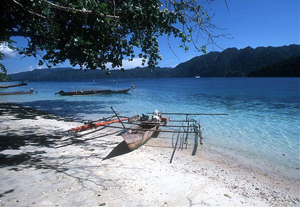


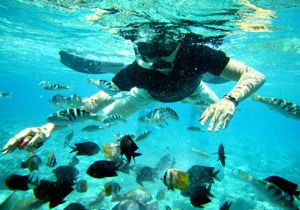
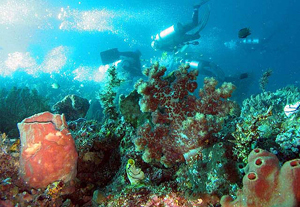
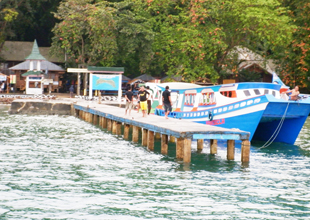


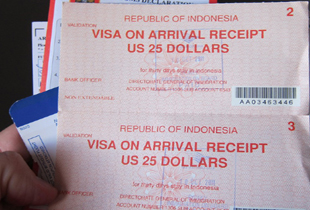

 The first thing ever known when we talk about Bali is its white sand beach, which is likely to be favored by most tourists. Bali carried with it, a tropical characteristic which geographically filled with flat area, lake, valley, mountain, and blue seawater. Maybe the God created the island with the intention of giving pleasure for more people. Further, such characteristic of the island also became a landscape where there is richness in term of culture. People would enjoy various cultures such as Balinese Dancing, traditional music like Gamelan, or a festival like Galungan; all of which will be given by Balinese in moment when tourist land in there. Speaking of culture in Bali, surely what I’ve mentioned above are just some examples of culture of people that can be enjoyed in there. In this sense, culture in Bali has been connected firmly with religion. So it is a kind of spiritual life and religious atmosphere that you are going to meet in Bali. The most visible signs of religion marked with the existence of sesajen which can be found in every souvenir stall, work place, house, and even airport (especially its check-in-desk). Balinese Hinduism, then, is a source for Balinese spiritual life. It has been manifested through the blood line of Balinese over 500 years. So we are finding the main sign of Bali tourism, which at first it should be admitted through Balinese spiritual life and form. Another sign of tourism in Bali can surely be seen from several forms of culture and performance. Within the idea of traditional music, tourists will find such two things as wayang kulit (shadow puppet) and gamelan, both of which are dominant in Bali, and they are often performed to give the sense of entertainment for people who visit Bali. Within the idea of dances, there are various dance performances which offers extremely dramatic and visual. These were including: Calonarang, Barong, Legong Keraton, and Kecak.
The first thing ever known when we talk about Bali is its white sand beach, which is likely to be favored by most tourists. Bali carried with it, a tropical characteristic which geographically filled with flat area, lake, valley, mountain, and blue seawater. Maybe the God created the island with the intention of giving pleasure for more people. Further, such characteristic of the island also became a landscape where there is richness in term of culture. People would enjoy various cultures such as Balinese Dancing, traditional music like Gamelan, or a festival like Galungan; all of which will be given by Balinese in moment when tourist land in there. Speaking of culture in Bali, surely what I’ve mentioned above are just some examples of culture of people that can be enjoyed in there. In this sense, culture in Bali has been connected firmly with religion. So it is a kind of spiritual life and religious atmosphere that you are going to meet in Bali. The most visible signs of religion marked with the existence of sesajen which can be found in every souvenir stall, work place, house, and even airport (especially its check-in-desk). Balinese Hinduism, then, is a source for Balinese spiritual life. It has been manifested through the blood line of Balinese over 500 years. So we are finding the main sign of Bali tourism, which at first it should be admitted through Balinese spiritual life and form. Another sign of tourism in Bali can surely be seen from several forms of culture and performance. Within the idea of traditional music, tourists will find such two things as wayang kulit (shadow puppet) and gamelan, both of which are dominant in Bali, and they are often performed to give the sense of entertainment for people who visit Bali. Within the idea of dances, there are various dance performances which offers extremely dramatic and visual. These were including: Calonarang, Barong, Legong Keraton, and Kecak. 
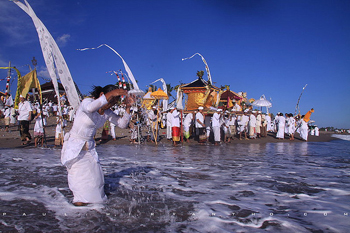 Bali is the most well known tourist destination in Indonesia. People visit Bali since there are many interesting things that can be seen in Bali. The interesting things that can be seen in Bali are not only its natural beauty but also its culture and custom since Balinese is well known as people who still holding tight their traditional cultures along with the modern one. Moreover, since the majority of Balinese are Hindu, thus, their religious holy day is much related to Hindu religious holy day. There are many religious holy days that related to Hindu that are commemorated in Bali. The holy days are such as Nyepi, Galungan, Saraswati, Kuningan, etc. Nyepi is the most well known Hindu religious holy day not only in Bali but also all over the world. It is become famous since this holy day may be considered as a unique holy day. Nyepi is a holy day that is commemorated every Saka new year in Balinese calendar, meanwhile, in national calendar it is happens around March but the date always changing due to the different counting system to Balinese calendar. Nyepi means “Day of Silence”, thus, during Nyepi day; Balinese Hindu will do four prohibitions in 24 hours. They are “amati geni”, “amati karya”, “amati lelunganan”, and “amati lelanguan”. Amati geni means that Balinese is not allowed to light any fire, electricity is included. Amati karya means that Balinese is not allowed to work. Amati lelunganan means that Balinese is not allowed to go outside. Furthermore, amati lelanguan means that Balinese should do fasting and cannot entertain themselves. In order to make sure that the prohibitions are followed, there are traditional security men which called “Pecalang” whose job to patrol the street. During Nyepi all of the public activities must be stop, thus, all of the people in Bali must follow the rules though they do not celebrate Nyepi. Thus, the only airport in Bali will also be closed. The day after Nyepi is called “Ngembak Geni” in which in this day friends and families are gather to ask forgiveness from one and another. In this day, the activities are going back to normal again.
Bali is the most well known tourist destination in Indonesia. People visit Bali since there are many interesting things that can be seen in Bali. The interesting things that can be seen in Bali are not only its natural beauty but also its culture and custom since Balinese is well known as people who still holding tight their traditional cultures along with the modern one. Moreover, since the majority of Balinese are Hindu, thus, their religious holy day is much related to Hindu religious holy day. There are many religious holy days that related to Hindu that are commemorated in Bali. The holy days are such as Nyepi, Galungan, Saraswati, Kuningan, etc. Nyepi is the most well known Hindu religious holy day not only in Bali but also all over the world. It is become famous since this holy day may be considered as a unique holy day. Nyepi is a holy day that is commemorated every Saka new year in Balinese calendar, meanwhile, in national calendar it is happens around March but the date always changing due to the different counting system to Balinese calendar. Nyepi means “Day of Silence”, thus, during Nyepi day; Balinese Hindu will do four prohibitions in 24 hours. They are “amati geni”, “amati karya”, “amati lelunganan”, and “amati lelanguan”. Amati geni means that Balinese is not allowed to light any fire, electricity is included. Amati karya means that Balinese is not allowed to work. Amati lelunganan means that Balinese is not allowed to go outside. Furthermore, amati lelanguan means that Balinese should do fasting and cannot entertain themselves. In order to make sure that the prohibitions are followed, there are traditional security men which called “Pecalang” whose job to patrol the street. During Nyepi all of the public activities must be stop, thus, all of the people in Bali must follow the rules though they do not celebrate Nyepi. Thus, the only airport in Bali will also be closed. The day after Nyepi is called “Ngembak Geni” in which in this day friends and families are gather to ask forgiveness from one and another. In this day, the activities are going back to normal again.
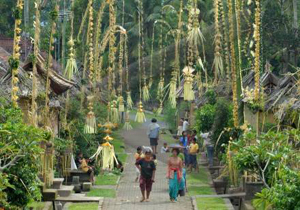
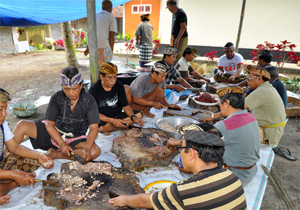
 There is one other Hindu religious holy day that is celebrated in Bali. This day is called Sarawati day. Saraswati is the second biggest Hindu religious holy day after The Galungan day. Saraswati day is commemorated every “Saniscara”, “Umanis”, “Wuku Watugunung” which is based on the Balinese calendar (Pakuwon) and seven day cycle (Saniscara). Saraswati means knowledge day, the name is taken from Balinese goddess of knowledge. The aim of celebrating Saraswati is that the Balinese feel grateful to the goddess for giving them the ability to understand human nature, to write and to read. During Saraswati day, in the afternoon, Balinese is not allowed to read or write the book since all of the books are offered. Later, in the evening, people read religious books in their own home or in the temple. This night is called “malam sastra”.
There is one other Hindu religious holy day that is celebrated in Bali. This day is called Sarawati day. Saraswati is the second biggest Hindu religious holy day after The Galungan day. Saraswati day is commemorated every “Saniscara”, “Umanis”, “Wuku Watugunung” which is based on the Balinese calendar (Pakuwon) and seven day cycle (Saniscara). Saraswati means knowledge day, the name is taken from Balinese goddess of knowledge. The aim of celebrating Saraswati is that the Balinese feel grateful to the goddess for giving them the ability to understand human nature, to write and to read. During Saraswati day, in the afternoon, Balinese is not allowed to read or write the book since all of the books are offered. Later, in the evening, people read religious books in their own home or in the temple. This night is called “malam sastra”. 
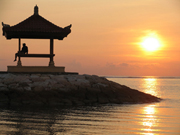 The most common reason why many people like to visit Bali is because they want to know more about popular beach in Bali like Kuta Beach. Some of them try to find the information about this beach and they are really curious to visit Kuta beach. What is the interesting thing about Kuta? I can say that Kuta is a combination between elegant and beautiful place. People say that it is the perfect place for seeing sunset. That is why Kuta Beach is also called Sunset Beach; even some professional photographers have the same opinion about Kuta beach. For surfer, Kuta beach is such a heaven for them because the waves are perfect for surfing. If you can see in the Kuta’s side, there are many local people who open surfboard for rent. How about the price? Well, it’s recommended for you to bargain the price first before renting the surfboard. One more important thing, Kuta is not only popular because of its beach, but Kuta is a great place for shopping. Every Thursday night, there’ll be free ladies night. So for ladies, they can enter the Kuta without entrance fee. What do you think about that, ladies? There are many star hotels, pubs, and stores which sell some products from local or international.
The most common reason why many people like to visit Bali is because they want to know more about popular beach in Bali like Kuta Beach. Some of them try to find the information about this beach and they are really curious to visit Kuta beach. What is the interesting thing about Kuta? I can say that Kuta is a combination between elegant and beautiful place. People say that it is the perfect place for seeing sunset. That is why Kuta Beach is also called Sunset Beach; even some professional photographers have the same opinion about Kuta beach. For surfer, Kuta beach is such a heaven for them because the waves are perfect for surfing. If you can see in the Kuta’s side, there are many local people who open surfboard for rent. How about the price? Well, it’s recommended for you to bargain the price first before renting the surfboard. One more important thing, Kuta is not only popular because of its beach, but Kuta is a great place for shopping. Every Thursday night, there’ll be free ladies night. So for ladies, they can enter the Kuta without entrance fee. What do you think about that, ladies? There are many star hotels, pubs, and stores which sell some products from local or international. 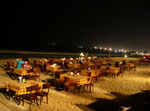 Once again, visiting Kuta is really a great idea for your holiday. For those who want to make pre-wedding photo, Kuta beach can be your perfect choice. There are so many couples who decide to have photos for their pre-wedding here, at Kuta. What are you going to do right now? If you want to eat some delicious sea food menus, you can visit Jimbaran beach. Jimbaran beach is not really different with Kuta beach. Here, at Jimbaran, you will able to find some restaurants that have various menus for seafood. You can enjoy the romantic night while eating your favorite sea food menu. Once again, popular beach in Bali offers the great and unforgettable moment for your holiday. If you want to enjoy the beautiful scenery, awesome sunset, delicious food, and have a fun day with the local people who are really friendly, Bali is your favorite place that must be visited. If you are lucky, you can see some cultures that are held in Bali. What are you waiting for right now?
Once again, visiting Kuta is really a great idea for your holiday. For those who want to make pre-wedding photo, Kuta beach can be your perfect choice. There are so many couples who decide to have photos for their pre-wedding here, at Kuta. What are you going to do right now? If you want to eat some delicious sea food menus, you can visit Jimbaran beach. Jimbaran beach is not really different with Kuta beach. Here, at Jimbaran, you will able to find some restaurants that have various menus for seafood. You can enjoy the romantic night while eating your favorite sea food menu. Once again, popular beach in Bali offers the great and unforgettable moment for your holiday. If you want to enjoy the beautiful scenery, awesome sunset, delicious food, and have a fun day with the local people who are really friendly, Bali is your favorite place that must be visited. If you are lucky, you can see some cultures that are held in Bali. What are you waiting for right now?